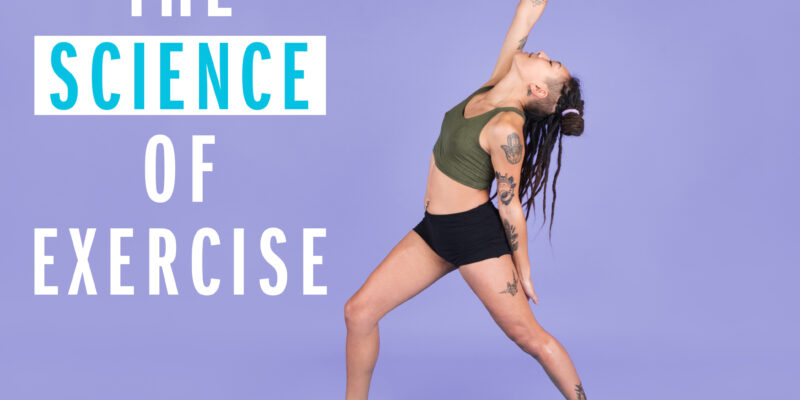
You undoubtedly have a hunch that exercise is beneficial to your health, and you’ve probably heard that it’s “heart-healthy.” But, if you’re like most people, that’s not enough to motivate you to work up a sweat daily. Only 20% of Americans get the recommended 150 minutes of strength and cardiovascular physical activity per week, more than half of all baby boomers report doing no exercise at all, and 80.2 million Americans over the age of 6 are entirely inactive, according to my TIME cover story, “The Exercise Cure.”
That’s terrible news, but recent research indicates that there are several compelling reasons to begin moving at any age, even if you’re sick or pregnant. Scientists are discovering that exercise is, in fact, medicine. Claude Bouchard, head of the human genomics laboratory at Pennington Biomedical Research Center in Louisiana, states, “There is no medication that comes near to what exercise can accomplish.” “And even if there were, it would be prohibitively expensive.”
You can read the whole story for more, but here are some of the fantastic things that happen to a body in motion you can also read about Pork floss
1. Exercise is excellent for your brain.
It has been associated with reduced sadness, improved memory, and faster learning. Exercise appears to be the most excellent strategy to prevent or delay the beginning of Alzheimer’s disease, which is a severe concern for many Americans.
Scientists aren’t sure why exercise alters the structure and function of the brain, but it’s a hot topic of study. Thanks to the protein BDNF, they’ve discovered that exercise increases blood flow to the brain, feeding the creation of new blood vessels and even new brain cells (brain-derived neurotrophic factor). BDNF promotes the development of new neurons and aids in the repair and protection of brain cells. According to recent research, it may also help individuals focus.
2. You might get happier.
Numerous studies have shown that various forms of exercise, ranging from walking to cycling, improve people’s moods and even alleviate depressive symptoms. Serotonin, norepinephrine, endorphins, and dopamine are brain chemicals that decrease pain, brighten mood, and reduce tension when you exercise. “For years, we have concentrated almost solely on the physical advantages of exercise, ignoring the psychological and emotional benefits of being physically active regularly,” says Cedric Bryant, chief science officer of the American Council on Exercise.
3. It might make you age slower.
Exercise has been found to increase life expectancy by up to five years. According to little new research, moderate-intensity exercise may help cells age more slowly. Humans’ telomeres—the protective caps on the ends of chromosomes—get shorter as they age and their cells cycle repeatedly. Researchers obtained a muscle biopsy and blood samples from 10 healthy participants before and after a 45-minute ride on a stationary bicycle to examine how exercise impacts telomeres. According to the researchers, training boosted levels of a chemical that preserves telomeres, decreasing the rate at which they shorten over time. As a result, activity appears to delay the ageing process at the cellular level.
4. It’ll make your skin look better
Aerobic exercise increases blood flow to the skin, giving oxygen and nutrients that aid skin health and wound healing. According to Anthony Hackney, an exercise physiologist at the University of North Carolina in Chapel Hill, “when patients have injuries, they should be moving as soon as possible—not just to ensure that the muscle doesn’t atrophy, but also to ensure that there is excellent blood flow to the skin.” If you exercise for long enough, your skin will develop more blood vessels and smaller capillaries.
The skin also acts as a heat release point. (For further information, see “Why Does My Face Turn Red When I Exercise?”) When you exercise, your muscles produce a lot of heat, which you must release into the environment to keep your body temperature from rising too high, according to Hackney. The heat in the muscle is transferred to the blood, which then transports it to the skin, where it may be expelled into the atmosphere you can also read about vpn india .
5. Amazing things can happen in just a few minutes.
According to new studies, it doesn’t take much activity to get the advantages. “How low can you go?” is a question that has piqued our curiosity. Martin Gibala, a professor of exercise physiology at McMaster University in Ontario, agrees. He wanted to see how successful a 10-minute workout was compared to a traditional 50-minute routine. Brief recoveries follow three intense 20-second bouts of all-out, as-hard-as-you-can activity in his micro-workout. According to new research, you don’t need much movement to reap the benefits. “Can you go as low as you can?” is a question that has caught our interest. Martin Gibala, an exercise physiology professor at McMaster University in Ontario, concurs. He intended to compare the effectiveness of a 10-minute workout to a typical 50-minute workout. In his micro-workout, three intense 20-second bouts of all-out, as-hard-as-you-can exercise are followed by brief rests.
6. It can assist you in recovering from a severe illness.
Even highly strenuous exercise, such as the interval exercises Gibala is researching, can be beneficial to patients with various chronic illnesses, ranging from Type 2 diabetes to heart failure. This is novel thinking, as patients with specific diseases have been told not to exercise for decades. Scientists now know that a much larger number of individuals can and should exercise. The exercise was even more beneficial than medication in helping individuals recover from strokes, according to a new study of more than 300 randomized trials.
Since the early 1990s, Dr Robert Sallis, a family physician at Kaiser Permanente Fontana Medical Center in California, has recommended exercise to his patients in the hopes of reducing drug use. “It performed incredibly well, especially in my sickest patients,” he adds. “I would see huge changes in their chronic condition, not to mention all of these other things like sadness, anxiety, mood, and energy levels if I could just get them to do it daily—even just walking, anything that brought their heart rate up a little bit.”
7. The size of your fat cells will decrease.
Carbohydrates and lipids are both used as energy sources by the body. However, continuous aerobic exercise training improves the body’s ability to burn fat, which takes a large amount of oxygen to convert to energy. “One of the benefits of exercise training is that it strengthens and improves our circulatory system’s ability to transport oxygen, allowing us to burn more fat as an energy source,” Hackney adds. Consequently, your fat cells generate the chemicals that cause persistent low-grade inflammation, shrink, and inflammation decreaseyou can also read about hardest languages to learn.











